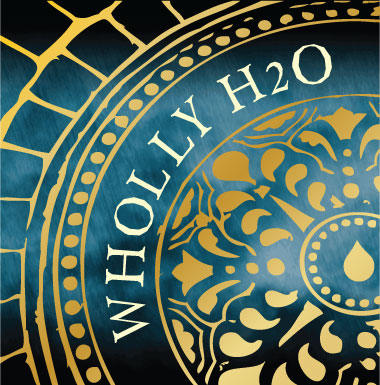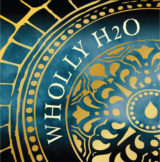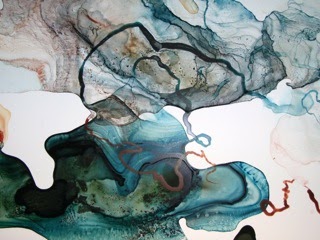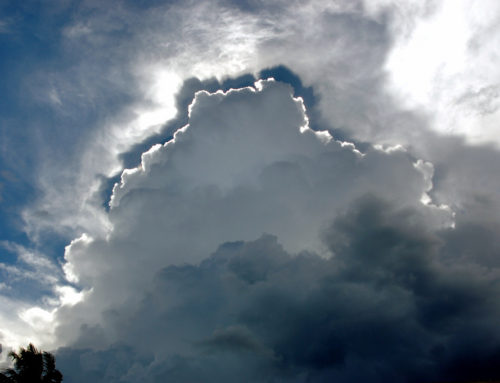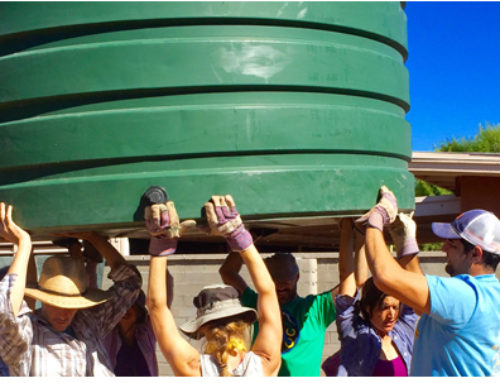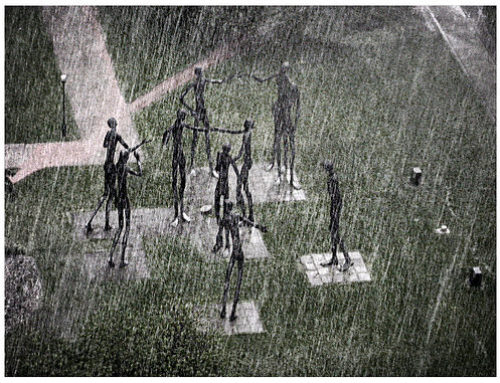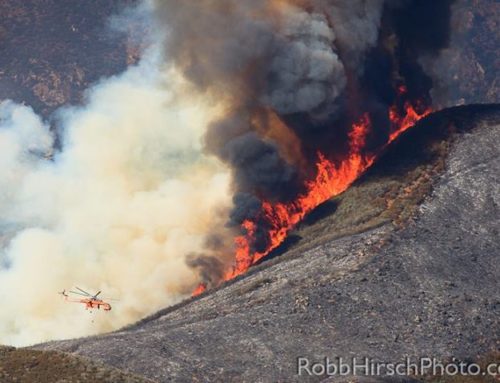Standing with the Watershed, Tuolumne’s Rim Fire
Opening Reception: Thursday, Dec 5, 2013, 6pm – 8pm
Closing Reception: Thursday, January 30th, 6pm – 8pm
58 Maiden Lane, 3rd Floor (between Grant and Kearny)
Standing with the Watershed, Tuolumne’s Rim Fire at Sherwood Gallery offers a new perspective in our series of exhibitions that strive to reinterpret the modern urban condition and redefine our relationship with nature.
The curators for this show are Elizabeth Dougherty, Wholly H2O, together with Lauren Elder, instructor at CCA, WEAD Board of Directors, and with Bry Sartre of Sherwood Gallery.
The show is open from Dec 5th, 2013 through January 30th, 2014. Gallery hours are open Monday – Friday, noon – 5pm and by appointment please call 415.677.7300.
For more information about the gallery, please contact Scott Hansen, shansen@sherwoodgallerysf.com or visit Sherwoodgallerysf.co
For more information about the show, please contact Elizabeth Dougherty, standindingwiththewatershed@whollyh2o.org or visit Wholly H2O
Show Description
The fragile relationship between San Francisco Bay Area residents and their water supply was heightened by the recent events of the Rim Fire that tore through the protected watershed in and around Yosemite that provides the Bay Area with much of its water. Wholly H2O, in partnership with Sherwood Gallery, has assembled a provocative group of 17 artists working to address the environmental issues surrounding this interrelationship.
Presenting works in a variety of media, the show Standing with the Watershed, Tuolumne’s Rim Fire opens in the Sherwood Gallery on December 5th. The artists share their interpretations and experiences defined by the nature-urban interface and the dynamic transformative element of wildfire that brings the tension in this relationship to the fore. Both the physicality of the Tuolumne River Watershed and the use of these waters in San Francisco and Silicon Valley are the launching points for all of the artists’ work. Grappling with the dynamic and unpredictable variables of ‘natural disasters’ provokes a corresponding response exhibited in the paintings, photographs and installations on view in the gallery.
The two-month exhibit aims to expose the energy and vitality of this watershed and water system before, during and after the Rim Fire. The stories and impressions exhibited use the Fire as a point of reference but extend deeper into the human relationship with this watershed and the causal relationships behind environmental disasters. The show is inspired at times by the tragic beauty of the natural landscape engulfed in flames and its people reeling in the fire’s path and aftermath. Other moments the show draw us in to the urban side of the water system sharing impressions where this water is used by 2.5 million of the urban residents in the Bay Area.
Artist Bios
Curtis Creek 6th Grade Elementary
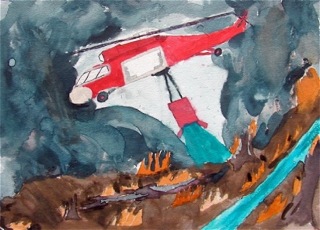
This collection of original watercolor art and poetry is the perspective of our students to the devastating Rim Fire in Tuolumne County. Having the fire line just six miles from our school, the students experienced thick smoke, apprehensive moments, repeated school closures, and possible evacuations.
This was originally an art class to further their understanding of the Rim Fire as our entire school prepared for “Rim Fire Appreciation Day” in early October. The results were so phenomenal that we decided to transform their artwork into a 2014 calendar which makes a touching and sometimes eye-opening remembrance of those tough weeks.
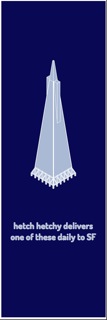
My work focuses on buildings, streetscapes and landscapes supporting rich, active environments creating regenerative ecological, agricultural and cultural footprints within cities.
My work is centered in the Bay Area and includes long-term engagement with environmental issues in North and West Oakland as well as San Francisco. I recently worked on reducing lead toxicity in the historic neighborhood of South Prescott-Lower Bottoms. After treatment, I wanted the landscape restoration to offer increased bio-diversity, cleaner stormwater runoff, home-grown food, etc. while offering residents beauty and the ability to relax and recharge when outside. When designing for City Slicker Farm, I am very interested in supporting community recreation, enjoyment and exercise of cultural practices while allowing for maximum healthy food production in the West Oakland food desert. Many of the species of the perennial plantings at the farms are native to support native flora and fauna in the area. I am mapping localized economic, ecological and cultural patterns in West Oakland to serve as a parallel resource for the West Oakland Specific Planning Process currently underway.
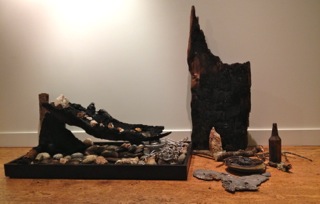
Elizabeth Dougherty, Ph.D. is a mixed bag multi media artist, engaged in “garbage collection and redistribution.” When not educating Californians on the beauty of water conservation and reuse as director of Wholly H2O, she is melting metal, wiring fountains with LED lighting, transluscifying images – creating recycled, functional, ecological art. In her wondrous workshop located within American Steel Studios in West Oakland, Elizabeth works exclusively with the detritus of the earth and it’s inhabitants.
Ariel Saari Galos
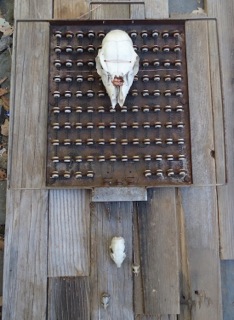
When I was little, I declared that I wanted to be a Paleontologist. I think I was maybe four or five and I had spent the first few years of my life being schlepped around Washington state by my dad, who was always on the hunt for fossils. One of my earliest memories is of my father swinging me up a steep hill by the back of my Osh-Kosh-B’Goshes because I was too tired to walk anymore. We were looking for trilobites, but would settle for anything from more recent epochs.
Trilobites are hard to find but we found purpose in the exploration. We would pick our way through coal mining ruins, wondering at the things left behind by people passed on. These trips with my father must have been the beginning of my fascination with mortality and impermanence. I found that, often, the things left behind are beautiful and out of their original context are worthy of consideration.
I spend most of my free time now looking for things left behind. Things that are discarded and forgotten by the living world and I try to make those things into something worth considering.
Kevin Galos
Fire Fighter, US Forest Service
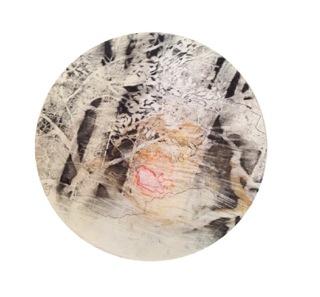
The work represented here came from one series and originate with one image. They are of a woodland scene, carved on wood and printed on various watershed maps throughout the Northwest. These maps identify soil, vegetation and other natural objects within a watershed. Once the plate was transferred onto these maps, it was then colored on and cut through, using paper cutting techniques to give the illusion of lace. The first piece, Rim Fire, is a woodcut transfer that was then drawn on, without the paper cutting element. These works are still in progress, and cover various techniques to gain the result of both natural and manmade effects on the ecosystems we come in contact with.
Sarah Anne Graham currently lives in California. After a few years traveling around the United States and abroad; from Virginia, Georgia, Oregon (a brief time in New Zealand), Pennsylvania and Idaho to her current residence in California, she is working on oil paintings of the landscape of the Sierra Nevada foothills, as well as continuing her work on woodblock transfers on maps.
Graham’s paintings are mostly representational depictions of the natural world, with the occasional object inserted, that are used to symbolize loss, arrested development or other emotions. The surreal quality of these paintings illicit ambiguity and are meant to provoke further investigation.
Her recent prints are abstracted landscapes. The woodblock transfers onto maps remind the viewer of the role of conservation, management and the nomenclature of science to classify and collect info on the natural world. Her works have been shown in one-person and group exhibitions in the US, as well as New Zealand. Graham studied at the Atlanta College of Art, and received her BFA from Oregon State University in 2003 in painting and printmaking. Sarah is currently doing a residency as an Artist of the Woods for the Stanislaus National Forest, through a program with the USDA. She will be teaching an oil painting workshop while living on site.
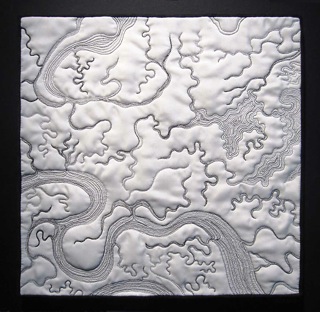
Textiles have been an important part of Linda Gass’ life since her grandmother taught her to sew and embroider as a child. In her early adult years, she took a detour through technology after graduating from Stanford University with a BS in Mathematics and an MS in Computer Science and worked in the software industry for 10 years. Linda returned to making textiles 14 years ago and now exhibits her work internationally in galleries and museums. Her work is published in numerous books and magazines including 500 Art Quilts, The Map As Art: Contemporary Artists Explore Cartography, Art Quilts: A Celebration, Fiberarts Design Book 7, American Style, American Craft, and Art Papers. Linda’s awards include the prestigious Fleishhacker Foundation Eureka Fellowship and the Arts Council Silicon Valley Artist Fellowship. She was featured in two episodes of Simply Quilts on Home & Garden Television and has taught workshops at Arrowmont and the Mendocino Art Center. She travels extensively in the wilderness areas of the West where she finds much of the inspiration for her work. Linda is an artist in residence in the Palo Alto Cubberley Artist Studio program and is a master member of the Baulines Craft Guild. She currently serves on the advisory board of the Black Rock Arts Foundation and has served on the boards of the San Jose Museum of Quilts and Textiles and the Textile Arts Council of the de Young Museum in San Francisco. City.
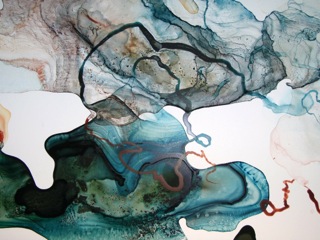
Rebecca Haseltine was dancing and drawing, swimming, singing, and running through childhood. She created a special major in college combining dance, art, science, and education. This is still the broad area of interest that underlies her work. After performing professionally as a dancer for many years, she got a tiny art studio and began developing movement-based drawing. Over the years she deepened this practice through studies inBody-Mind Centering®, a profound training in physiological awareness. Studies in Qi Gong, Tai Chi, Yoga, and Bagua all influenced her perception of the body as more (or less) than physiology. Rebecca teaches classes in Body-Mind Centering® and Body Learning; her private practice in Body Learning includes bodywork and somatic movement therapy. She taught art and movement integration at the Bridge School from 1995 to 2006; the Bridge School is for children with severe physical and language impairment. Rebecca has a profound curiosity about language and communication for which drawing has been a means of investigation and experimentation. She has taught her Somatic Drawing classes and workshops in the Bay Area, Ireland, England, Holland, Germany, and Denmark. Rebecca continues to develop somatically-based art-making simultaneously with developing her somatic practice with children and adults. The body is a creative project in itself.
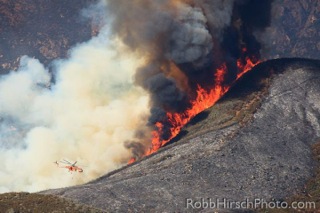
Trained academically as a biologist and natural historian, Robb Hirsch developed an intimate relationship with the natural world. This connection was established early during annual childhood visits to Yosemite, exploring and developing a sense of oneness with this magical place. Later, Robb traveled through Africa, Central America and the western United States, absorbing the beauty while gaining a deep understanding of these surroundings. He established a career as a field biologist, working for United States Geological Survey, California State Parks and several private firms, focusing primarily on threatened and endangered species. He also gave slide shows to a wide variety of groups where his photography was originally a tool to educate others about the natural world and the importance of wild places. As he continued to shoot, Robb became more critical, realizing the quality of the images he was producing had great potential, and there might be a market for this work in the future.
The future became reality when Robb and his wife started Mountain Sage, just outside Yosemite National Park, in the Sierra foothill community of Groveland Ca. This is a unique combination of art gallery, plant nursery and gardens, coffee and teahouse and retail store on family heirloom grounds. Several rooms of the historic house are dedicated as gallery space displaying a selection of large framed images. Robb began selling fine art prints out of Mountain Sage in 2002 to a very receptive audience and has experienced consistent growth since.
Robb prefers to photograph away from the crowds, often backpacking or skiing long distances to previously scouted locations. Photography is part of the wilderness experience for him and by spending considerable time exploring,, scouting and waiting for the right light, he becomes more in tune with the area, ultimately culminating in more evocative images.
Robb shoots with 35mm Cannon equipment (no color filters are used) and all images are printed to accurately reflect the original slide (no digital manipulations are performed). He enjoys shooting everything from wildlife to wildflowers, from grand landscapes to tiny abstracts. Robbs images are known for their compelling subjects, careful compositions and fine light. In 2007, these attributes were highlighted nationally when his color landscape, El Capitan and the Merced River in Winter, was selected out of 17,000 entries and named a winner in the Natures Best, Windland Rice Smith International Nature Photography Competition.
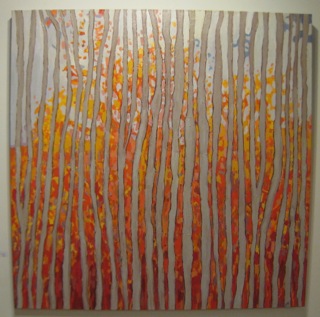
Leslie Hailey Hurst is an oil painter who lives and works in the foothills of the Sierra Nevada Mountains in California. She graduated from Washington State University with a Bachelor degree in Fine Arts. After raising her children, she returned to painting more than a decade ago.
Hurst’s expressionist painting style is open and loose. Her landscapes and still-lifes are infused with light and contemplative space. Her love of saturated and heightened color brings a dynamic sense of feeling and place to her work.
To round out the other corners of her life, Hurst also owns and operates Woods Creek Olive Oil Company, and is a principal partner in Table Mountain Beef- a niche marketing company selling local beef. She also travels extensively – painting in Alaska, France, Hong Kong, and Italy. “Seeing the work from an outsiders point of view often opens my eyes to my own landscapes – and keeps me coming back to try to capture the essence of my own homeland,” says Hurst.
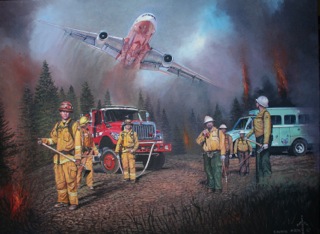
Karnahan knows a lot about wildland fire. For 18 Seasons, he has worked for the USDA Forest Service as a firefighter, Forest Protection Officer, and as a graphic artist and public affairs specialist. His paintings, based on years of personal experience on the firelines, are full of highly accurate detail. They also reflect his emotional commitment to wildland firefighting and to conserving our public wildland treasures. During the 2013 Rim Fire, the artist served as a firefighter in the northern section of the fire near Cherry Lake. In the first week of the fire, Karnahan was responsible in the evacuation of the Cherry Lake and Kibbie Ridge areas. For over a month he also patrolled the interior of the fireline, reporting on conditions and spread.
Karnahan spent most of his Forest Service career in the Sierra Nevada Mountains of California. He worked as a firefighter and in fuels management on the Eldorado, Plumas, Sequoia, Inyo, and Stanislaus National Forests. In addition, he designed posters for public education on the National Forest System and implemented visual interpretation programs for the Stanislaus National Forest. Karnahan also worked in the design and developement of two ampitheaters now being used on the Stanislaus National Forest. He has also done design and interpretive work for California’s Department of State Parks and Recreation.
Karnahan has been oil painting since he was 8 years old. In addition to painting Wildland Fire, Karnahan has been capturing the history of the American railroads on canvas for more than 35 years. He has completed many calendars on American railroads, and his artwork has been featured on numerous book and magazine covers. He also promotes art education for children in local schools. “It’s satisfying,” he says. “Usually, I’ll sell my paintings and won’t see them again. What I’m doing becomes part of the community.”
John Moore
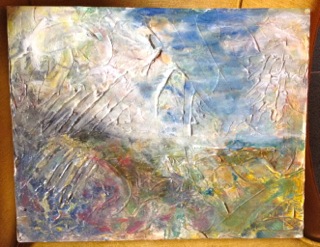
I met Art the first time I opened my eyes . The first piece of art I did was a beautiful mud pie. Art and I won our first award in kindergarten for a building block piece. The second award was for a series of finger paintings. Flash forward. I saw God. She was a Henry Moore sculpture. A light went off in my head! It was a satori moment. Art was never the same.
I knew then, there was more to Art than mud pies. In 1964, at the Hayward Art Fair we won first place in the High School division and second place in the open division. We did our first marble carving that same year. After high school, the air force, marriage, school and work, we pursued Art. Between then and now, I took a few classes and was the teaching assistant for several artists.
More recently, we’ve been pursuing forging, welding and more stone work, making furniture, handrails, gates and lights. All along the way, Art thought we should learn to paint which has been a staple in our artistic career.
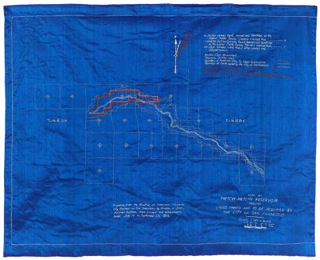
Bonnie Peterson has received several grants from the Illinois Arts Council, a grant from the Illinois Committee, National Museum of Women in the Arts, and other awards. She was an Artist-In-Residence at Yosemite, Rocky Mountain, Isle Royale, and Crater Lake National Parks. Her work is in the collection of the Museum of Arts and Design in NYC, the National Park Service, private collections, and she has an extensive exhibition record. She has a bachelor’s degree from the University of Illinois-Urbana and an MBA from DePaul University. Click here for a 5 minute interview (WTTW, Chicago Public Broadcasting, 2009).
My art chronicles my adventures in the wilderness and through life. I use embroidery to communicate provocative environmental and social issues. I present quantitative information in an unusual combination of stitched text and graphics. The work provides a novel opportunity to consider the scientific and historic context inherent in current events and social questions.
My current work examines geophysical climate issues. After hiking with scientists to measure Yosemite National Park’s last glacier, the Lyell Glacier, I embroidered the glacier’s topographic lines on silk, and presented historical comparative photos and text from 19th century explorers’ journals. During another backpacking trip I walked on mushy trails winding across recently melted glaciers on the ‘haute route’ in Switzerland and made an embroidery of the Bluemlisalp Glacier incorporating the topography and a graph of its shrinking size over the past century. After trekking in Tibet, I assembled a large embroidered velvet and brocade wall hanging which integrates ancient Tibetan cultural traditions with land and water control issues.
Recently I’ve collaborated with scientists on two environmental projects. For one, concerning inland lakes, I embroidered a large silk and brocade graph using invasive species and native fish population data. Historical records of lake ice and chemistry are presented in other graphs, along with explanations of the science. In another concerning climate change, atmospheric field equations and ice core records are embroidered in brocade alongside a quote from Ernest Shackleton, an early 20th century Antarctic explorer.
I am often astonished when I find a passage in an explorer’s journal that describes scenery I have visited or a rugged mountain trail I’ve walked. I share that sense of discovery and uncovering in my work. With soft materials and ornate stitching, I hope to expose the viewer to fascinating science and environmental interactions on our earth.
Bonnie Peterson has received several grants from the Illinois Arts Council, a grant from the Illinois Committee, National Museum of Women in the Arts, and other awards. She was an Artist-In-Residence at Yosemite, Rocky Mountain, Isle Royale, and Crater Lake National Parks. Her work is in the collection of the Museum of Arts and Design in NYC, the National Park Service, private collections, and she has an extensive exhibition record. She has a bachelor’s degree from the University of Illinois-Urbana and an MBA from DePaul University. Click here for a 5 minute interview (WTTW, Chicago Public Broadcasting, 2009).
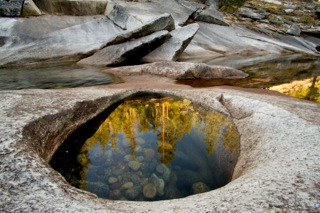
I will have succeeded if I can, even in a small way, capture the awe I feel when I step out into the wilderness and experience the wonders of the natural world. Mother Nature is the ultimate landscaper, architect, sculptor, painter, and musician. I am not as much the artist when I capture these scenes, as a seer of God’s creations. I strive to discover the sometimes obscured elements that when juxtaposed, and emphasized through composition, emphasize the incredible beauty already there. It is my hope that these photos inspire those who see them to get out into nature, and to work towards the preservation of these incredible places.
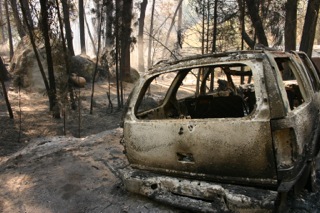
Grace Rubenstein is a journalist and media producer specializing in public health, mental health and immigration. Her stories – told in words, photos, audio and video – have appeared in The Atlantic.com, The New York Times, The Boston Globe, The Sacramento Bee, California Watch, San Francisco’s Bay Citizen, and Parenting and Edutopia magazines. She is the multimedia editor for TED Books and a regular contributor at KQED radio and the Center for Investigative Reporting. Grace speaks fluent Spanish, can’t resist a good salsa beat, and has lived in Mexico and reported stories across languages. She is a fourth-generation San Franciscan.
Dusty Vaughn developed his love of the outdoors as a young boy exploring the woods in his backyard in Nashville, Tennessee. Scouting developed his outdoor skills. It was on backpacking trips in the Smokies, camping along the Cumberland Plateau, and hiking the Appalachian Trail that Dusty found solace in the constancy of streams, immovability of mountains, and incalculable stars. His quest as a photographer is to capture the scenes that to him are sermons.
Ready to spend a moment or a day to capture the perfect shot, Dusty spends his vacations, weekends, and sunsets seeking out the beauty in his surroundings. His research on recreation impacts for the Forest Service, Fish & Wildlife Service, and the National Park Service has given him the opportunity to work in various wildernesses from Colorado to Alaska, documenting pristine places.
Dusty recently finished his recreation resource management master’s thesis on a statewide assessment of Wilderness Areas in Colorado for the USDA Forest Service while at Utah State University. He currently lives in works in Groveland, California for the USDA Forest Service as a recreation specialist, managing all forms of recreation on the Groveland Ranger District.
